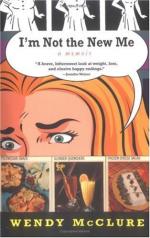[Illustration: JUSTICE AND DIVINE VENGEANCE PURSUING CRIME. FROM A PAINTING BY PRUD’HON.
This picture was painted for the Criminal Court of the Palace of Justice in Paris. At the time of the Restoration in 1816 the picture was replaced by a crucifix, and removed to the Luxembourg gallery, where it remained until 1823, when it was placed in the Louvre. It is considered Prud’hon’s masterpiece.]
It is as though nature had wished a contrast to this coldly intellectual type that there should have existed at the same time a painter who, seeking at the same inexhaustible fountain-head of classicism, found inspiration for an art almost morbid in excess of sentiment. Pierre Prud’hon was born at Cluny in Burgundy, April 4, 1758, the son of a poor mason who, dying soon after the boy’s birth, left him to the care of the monks of the Abbey of Cluny. The pictures decorating the monastery visibly affecting the youth, the Bishop of Macon placed him under the tuition of one Desvoges, who directed the school of painting at Dijon. Here his progress was rapid, but at nineteen the too susceptible youth married a woman whose character and habits were such that his life was rendered unhappy thenceforward.
In 1780 Prud’hon went to Paris to prosecute his studies; and there, two years after, was awarded a prize, founded by his province, which enabled him to go to Rome. It is characteristic of the man that, in the competition for this prize, he was so touched by the despair of one of his comrades competing with him that he repainted completely his friend’s picture—with such success that it was the friend to whom the prize was awarded, and who, but for a tardy awakening of conscience, would have gone to Rome in his place.
The judgment rectified, Prud’hon went to Rome, where he stayed seven years, studying Raphael, Leonardo da Vinci, and above all Correggio, whose influence is manifest in his work, and returned to Paris in 1789. Unknown, and timid by nature, he attracted little attention, and for some years gained his living by designing letter-heads, visiting cards, which were then of an ornate description, and the many trifles which constitute a present resource to the unsuccessful painter even to-day.
[Illustration: THE ASSUMPTION OF THE VIRGIN. FROM A PAINTING BY PRUD’HON.
This picture was ordered by the Emperor Napoleon for the chapel of the Tuileries. It was exhibited in the Salon of 1819, and, after the Revolution of 1848, was removed from the Tuileries to the Louvre, where it has since remained.]




